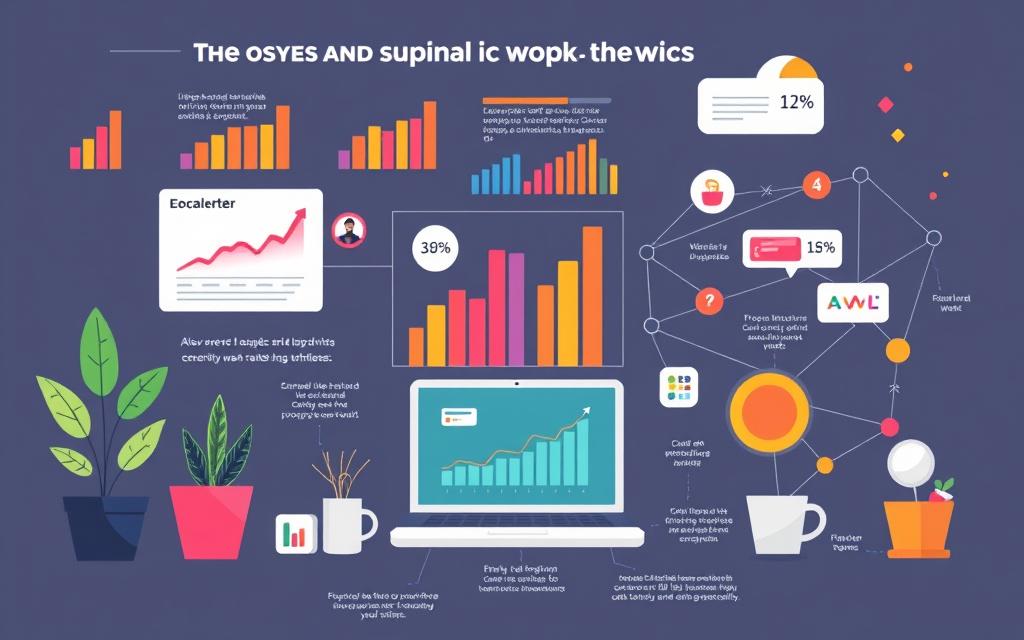As the nature of work rapidly evolves, the landscape of remote work and engagement has transformed significantly, especially in the aftermath of recent global events. Many organizations have adapted to remote working arrangements, leading to new dynamics that affect both employees and management alike. Studies indicate that a high percentage of employees appreciate the flexibility and autonomy that remote work provides, resulting in improved job satisfaction and overall morale.
However, as much as remote work offers substantial benefits, it also brings notable challenges. Employee engagement can be compromised by feelings of isolation and loneliness, which a significant number of professionals have reported experiencing. Communication barriers and difficulties in separating work from home life further complicate these scenarios, underscoring the importance of strategic management in hybrid work settings.
In exploring the intricate balance between the advantages and challenges of remote work, you will see how effective approaches can enhance employee engagement. The right tools and strategies can bridge the gaps, fostering a thriving culture among virtual teams. By investing in supportive environments and maintaining open lines of communication, organizations can unlock the full potential of their remote workforce.
Understanding the Shift to Remote Work
As the landscape of work evolves, the transition to remote work has become prominent. Recent trends show that six in ten U.S. employees with remote-capable jobs express a desire for a hybrid work arrangement. Among these, one-third prefer fully remote work, while less than ten percent lean towards on-site positions. This change signifies a shift in remote work dynamics and how they influence employee productivity.
Working remotely, whether fully or partly, has demonstrated markedly higher levels of employee engagement compared to traditional on-site roles. Employees in remote or hybrid setups are less likely to experience burnout, as indicated by a Gallup study. In contrast, workers engaged in traditional on-site roles report the lowest levels of engagement.
Despite its benefits, the telecommuting model introduces certain challenges. Feelings of isolation can arise, leading to a disconnect from teammates. Nearly sixty-four percent of employees working exclusively from home contemplate seeking new employment if their remote work options are eliminated. To bolster engagement, organizations must prioritize inclusive communication, foster social connections, and support employee growth.
Understanding the factors behind the shift to remote work is crucial. Organizations must adapt their strategies to meet the unique needs of remote employees. This adaptation includes recognizing that an optimal remote work role should feature well-defined tasks and a degree of independence from highly interdependent work structures. With hybrid work models on the rise, embracing this flexibility is essential for cultivating an engaged workforce.
The Positive Impact of Remote Work on Employee Engagement
Remote work has transformed traditional workplace dynamics, bringing numerous benefits that enhance employee engagement. As more organizations embrace this flexible work environment, understanding its advantages is crucial for maximizing employee motivation and productivity.
Flexibility and Autonomy
The shift to remote work offers unprecedented flexibility and autonomy for employees. With the ability to set their own schedules, many experience greater job satisfaction. Studies indicate that 72% of remote workers report feeling more productive at home compared to the office. This autonomy fosters a sense of ownership, significantly contributing to employee motivation and overall engagement levels.
Improved Work-Life Balance
A flexible work environment enables employees to better manage their personal and professional lives. By eliminating daily commutes, workers save time and reduce stress, leading to improved well-being. Reports show that 78% of remote employees experience enhanced well-being, while 55% note a decrease in stress levels. Such improvements correlate with increased engagement, as individuals are likely to feel more connected to their work when their personal needs are being met alongside professional responsibilities.
Access to a Global Talent Pool
Remote work expands the talent pool available to organizations. Approximately 62% of executives believe that this structure helps widen their recruitment reach, allowing for the hiring of specialized roles that might not be available locally. This access to a diverse global talent pool fosters innovation and creativity within remote teams, leading to higher engagement among employees. Organizations that embrace this approach not only benefit from a wealth of perspectives but also inspire a culture that prioritizes collaboration and inclusivity.
| Benefit | Impact on Employee Engagement |
|---|---|
| Flexibility and Autonomy | Increases overall job satisfaction |
| Improved Work-Life Balance | Decreases stress levels and enhances well-being |
| Access to a Global Talent Pool | Encourages diversity and innovation |
Overall, embracing remote work benefits not only supports employee motivation but also creates a more engaged and productive workforce. As organizations continue to adapt to this new normal, understanding and leveraging these advantages will remain key to fostering a thriving virtual workplace.
The Challenges of Remote Work on Employee Engagement
The transition to remote work has revolutionized the workplace. Yet, it also introduced significant remote work challenges that hinder employee engagement. Remote teams experience various issues, including feelings of isolation and communication barriers, which substantially impact their morale and productivity. Understanding these challenges is essential for fostering an engaged workforce.
Isolation and Loneliness
According to Igloo’s State of the Digital Workplace survey, 80% of remote workers feel left out. This sense of isolation can lead to disengagement, as employees miss out on face-to-face interactions typically experienced in an office environment. Furthermore, Gallup reveals that remote employees report feeling isolated 22% more often than their on-site counterparts, indicating a growing disconnect from both their teams and organizational culture.
Communication Barriers
Communication in remote teams often suffers due to the lack of spontaneous interactions found in traditional settings. Research by the Harvard Business Review indicates that these barriers can increase misunderstandings by 25%, delay responses by 17%, and create a lack of clarity by 12%. Such issues can exacerbate employee engagement issues, leaving team members feeling unmotivated and less connected.
Difficulty in Separating Work from Home
Maintaining a healthy work-life balance poses another challenge for remote employees. According to FlexJobs, 75% of remote workers struggle to keep their personal and professional lives separate. Moreover, Indeed’s Employee Burnout Report shows that 53% of those working from home find themselves clocking in more hours than they did in the office, which can amplify feelings of burnout. Deloitte’s Workplace Burnout Survey found that 77% of employees have faced burnout in their current jobs, underscoring the importance of establishing boundaries.
| Challenge | Impact | Statistics |
|---|---|---|
| Isolation and Loneliness | Increased disengagement | 80% feel left out; 22% report increased isolation |
| Communication Barriers | Collaboration hindrance | 25% more misunderstandings; 17% delays in responses |
| Difficulty Separating Work from Home | Burnout risk | 75% struggle with balance; 77% have experienced burnout |
Remote Work and Engagement: Balancing Benefits and Challenges
Remote work flexibility offers significant advantages, including increased productivity and improved work-life balance. Statistics reveal that remote work listings surged by 357% from May 2020 to May 2021, reflecting a strong demand for such arrangements. Many organizations recognize that offering engagement solutions such as remote work can lead to lower turnover rates, with U.S. companies with remote options experiencing 25% decreased turnover compared to those without.
Despite these benefits, the challenges of remote teams are real and must be managed actively. Many individuals face isolation due to lack of in-person interaction, with 46% reporting that maintaining professional relationships becomes more difficult. Addressing these challenges requires strategic planning which includes fostering strong communication channels and providing the necessary tools for success.
Engagement solutions should emphasize frequent check-ins and support from managers. Studies indicate that those who feel supported in their remote environments report higher levels of engagement and satisfaction with their organizations. As more people seek flexible work options, organizations can benefit from creating a hybrid work environment that meets individual preferences, as evidenced by the 13% of respondents who prefer office work daily compared to 14% favoring a fully remote setup.
To strike a balance, companies can leverage the benefits of remote work while tackling the challenges that arise. Fostering a positive remote work culture involves prioritizing employee well-being, creating a sense of community, and ensuring that remote employees do not feel isolated or overwhelmed. By implementing comprehensive strategies that combine flexibility with clear communication, organizations can help employees navigate the complexities of remote work effectively.
Strategies to Enhance Engagement in Remote Work Settings
Fostering a highly engaged workforce in remote environments requires intentional strategies that bridge the gaps created by physical distance. By focusing on regular employee check-ins and team-building initiatives, companies can enhance remote engagement and strengthen team dynamics.
Regular Check-ins
Establishing regular employee check-ins is key to maintaining open lines of communication. These interactions allow managers to provide visibility into team dynamics and organizational goals. Regular check-ins help address concerns, promote well-being, and encourage feedback from employees, ultimately leading to greater engagement. This structured approach can also combat feelings of isolation, helping team members feel connected even when working remotely.
Fostering a Sense of Community
Building a sense of community among remote teams is essential for enhancing remote engagement. Implementing effective team-building strategies, such as virtual activities, can help strengthen interpersonal relationships. Engaged employees not only contribute to a positive work environment but also show a higher level of enthusiasm and fulfillment in their tasks. Recognizing individual contributions through virtual shout-outs or team celebrations can further cultivate a supportive atmosphere that promotes collaboration and success.
| Strategy | Description | Benefits |
|---|---|---|
| Employee Check-ins | Regular interactions between managers and employees to discuss progress and concerns. | Increased visibility, improved morale, better alignment with goals. |
| Team-building Activities | Virtual events designed to strengthen team relationships. | Enhanced collaboration, stronger bonds, greater job satisfaction. |
| Recognition Programs | Regular acknowledgment of individual and team contributions. | Increased motivation, enhanced engagement, feeling valued. |
By combining regular employee check-ins with effective community-building activities, organizations can create an inviting and engaging remote work environment that maximizes productivity and retains top talent.
Innovative Tools to Promote Engagement Among Remote Teams
Embracing remote work technology has transformed the way teams communicate and collaborate. Using digital engagement tools is essential for fostering connection among remote employees. With the right platforms, you can replicate the interactions typically found in a physical office, ensuring that no one feels isolated. These technologies are pivotal in bridging communication gaps and enhancing overall team engagement.
Consider incorporating these effective tools into your remote work strategy:
- Trello: A visual project organization tool that aids remote team synchronization across various devices.
- Basecamp: Offers a collaborative workspace for organizing tasks, planning projects, and streamlining communication.
- Mural.ly: Fosters brainstorming and idea mapping, promoting creative thinking through virtual collaboration.
- HipChat: Enables real-time collaboration through chat rooms, file sharing, and screen sharing features.
- Leapsome: Provides tools for performance management and personalized learning to enhance employee growth in remote environments.
Research indicates that highly engaged workplaces see a significant decrease in absenteeism, with a 41% reduction reported. Remote employees equipped with these digital engagement tools are 17% more productive, leading to higher quality output. The importance of maintaining high engagement levels extends beyond individual satisfaction—organizations with engaged teams experience up to 20% more sales compared to their less engaged counterparts.
By actively promoting the use of these tools, you can keep your remote workforce connected, motivated, and aligned with company goals. As remote work becomes more entrenched, leveraging effective virtual collaboration technologies is essential for creating a thriving, engaged work environment.
| Tool | Purpose | Key Features |
|---|---|---|
| Trello | Project Management | Visual boards, task assignments, progress tracking |
| Basecamp | Team Collaboration | Task organization, messaging, file storage |
| Mural.ly | Brainstorming | Idea mapping, collaborative drawing, feedback tools |
| HipChat | Real-Time Communication | Chat rooms, file sharing, screen sharing |
| Leapsome | Performance Management | Feedback systems, learning modules, employee growth tracking |
Best Practices for Maintaining High Engagement Levels
Maximizing employee engagement in a remote work environment hinges on adopting effective practices. Transparent communication is key; organizations should clearly outline expectations, responsibilities, and performance metrics. These elements pave the way for employee retention strategies that prove beneficial for both workers and the organization as a whole.
Encouraging a healthy work-life balance translates to a more engaged workforce. Simple practices like promoting regular breaks, respecting personal time, and supporting mental health initiatives make a significant impact. Furthermore, implementing engagement best practices helps maintain a sense of community, fostering personal connections among remote employees.
Utilizing data-driven approaches to remote workforce management can highlight areas needing improvement. For instance, if a company learns that 70% of the variance in team engagement stems from managerial effectiveness, focusing on training and supporting managers can elevate engagement levels significantly. Here are some recommended practices:
- Provide new hires with comprehensive training and support to ease their transition into the company.
- Ensure remote employees have access to essential tools and a conducive workspace, enabling them to work efficiently.
- Offer development opportunities to empower remote workers and support their career growth.
- Encourage decision-making autonomy within work areas to enhance ownership and motivation.
- Respect time zones when scheduling meetings to honor the personal time of remote employees.
- Facilitate annual in-person gatherings to strengthen bonds, generating deeper connections between team members.
By incorporating these strategies, organizations can reinforce their commitment to keeping employees engaged while navigating the challenges of remote work.
| Engagement Level Impact | High Engagement | Low Engagement |
|---|---|---|
| Absenteeism Reduction | 78% | Lower |
| Turnover Rates | 21% | 51% |
| Productivity | 18% | Lower |
| Customer Loyalty | 10% | Lower |
| Profitability | 23% | Lower |
Implementing these practices nurtures a culture of engagement, ultimately enhancing performance across the organization and supporting long-term success.
Conclusion
The shift towards remote work has undeniably transformed the landscape of employee engagement. The findings from various studies, including a Gallup survey, highlight how forced returns to the office have negatively impacted morale and productivity, with organizations witnessing significant declines in engagement levels. As the future of work unfolds, it’s clear that flexibility and autonomy have emerged as key factors that enhance remote employee engagement, allowing for better work-life balance.
However, the challenges inherent in remote work—such as feelings of isolation and communication barriers—require thoughtful strategies for managing remote teams effectively. Emphasizing connection through virtual team-building activities and prioritizing open communication can help mitigate these issues, fostering a culture where employees feel valued and engaged. Organizations that rise to the occasion are better positioned to sustain high levels of engagement, driving both satisfaction and productivity.
Ultimately, as remote work continues to gain traction, maintaining a focus on employee engagement will be critical for organizations aiming for long-term success. By embracing innovative practices and staying attuned to employee needs, companies can create an environment that not only retains talent but also propels it to greater heights in the competitive landscape we inhabit today.










